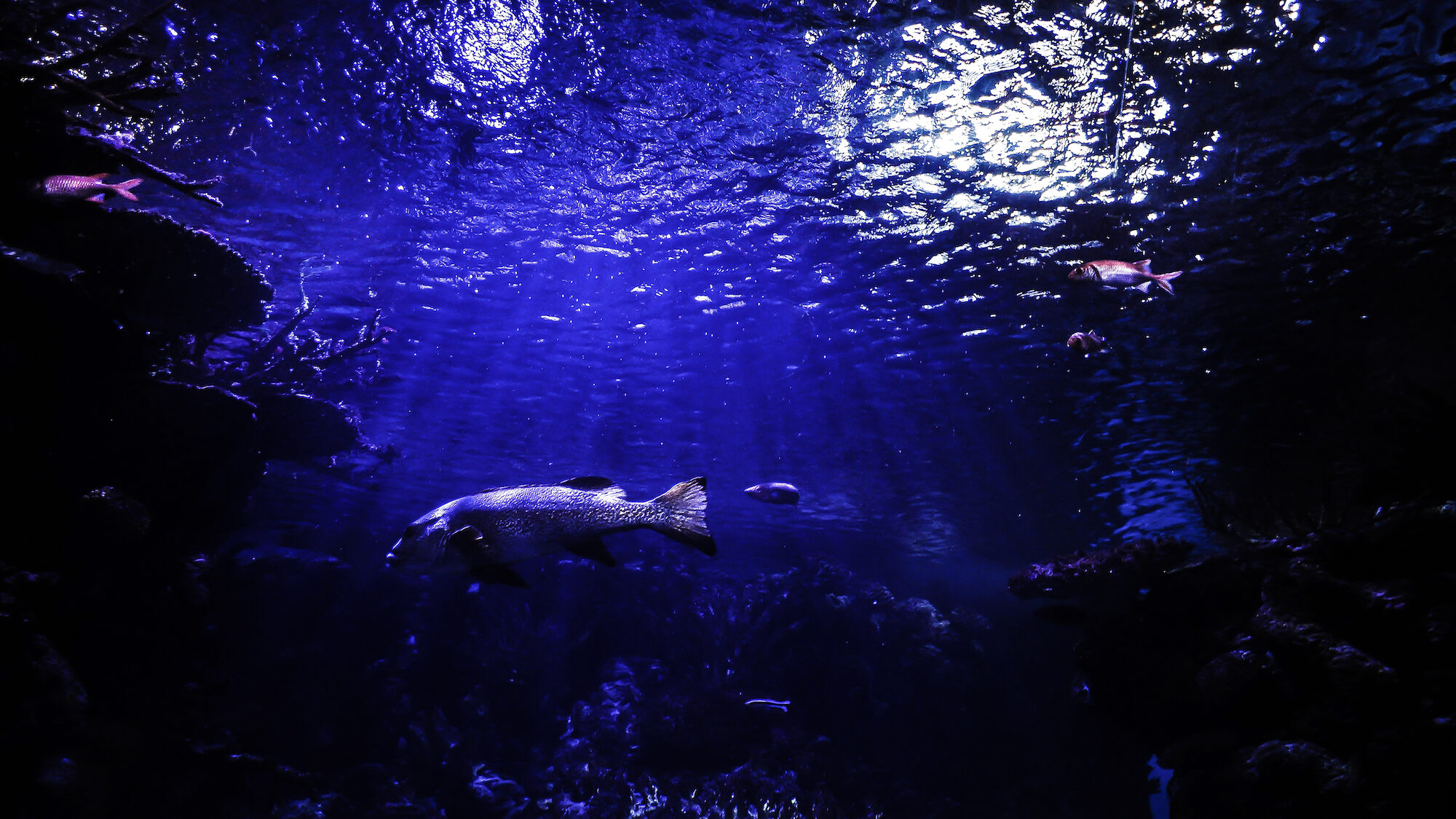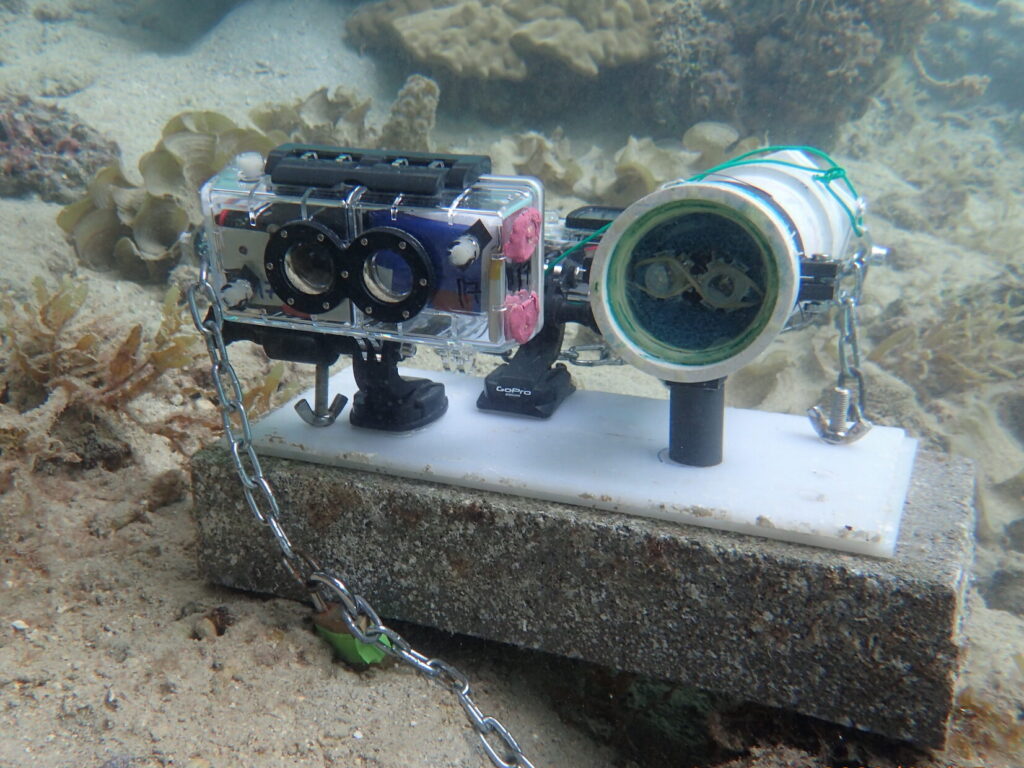How do fish use light at night?

Fish are integral to the health of coral reefs. They make up a big part of the food web, with each species interacting with dozens of others. Some species eat the algae that can smother corals; others regulate the fish populations themselves. However, while fish that are active during the day are well studied, we know a lot less about nocturnal fish.

Light is an important resource for nocturnal fish. It helps predators see their prey, and it may help prey see their predators. It can also trigger important life events like reproduction and habitat choice. However, it has been difficult to study how fish use light in a non-invasive way – i.e. without introducing light ourselves via torches, or by catching the fish in nets – so we have little understanding of their “natural” behaviour. Until now!
We have built our own camera setups to film the fish at night using infrared light. Since fish can’t see infrared, this means we can film them without changing their light-related behaviour. We are putting these cameras out on reefs illuminated by artificial light, such as those found near coastal hotels and resorts, to see how the fish respond to the light. If you’re a guest at one of these hotels, you may have seen us or our cameras around. They look like this:


With this footage, we will be able to see which species are attracted to the light, which species avoid it, and how their behaviour changes with different levels of light. This research will help us learn more about the elusive and understudied world of nocturnal fish.
We would love to answer any questions you have about our project. Please contact us if you’d like more information.
